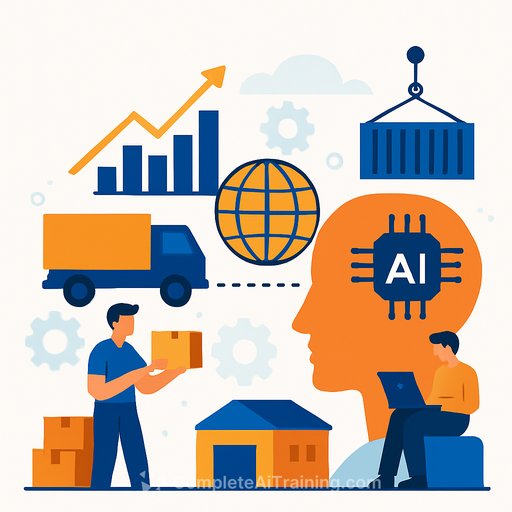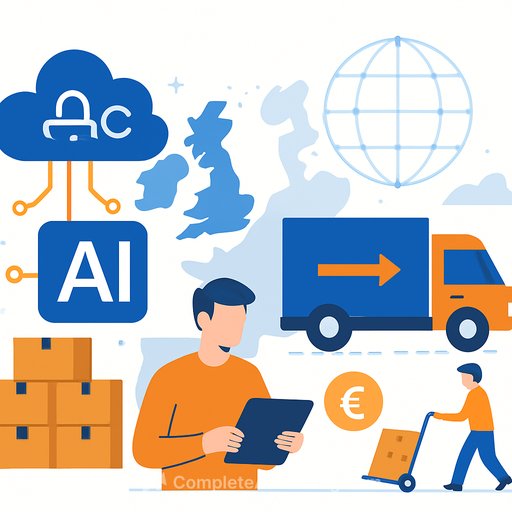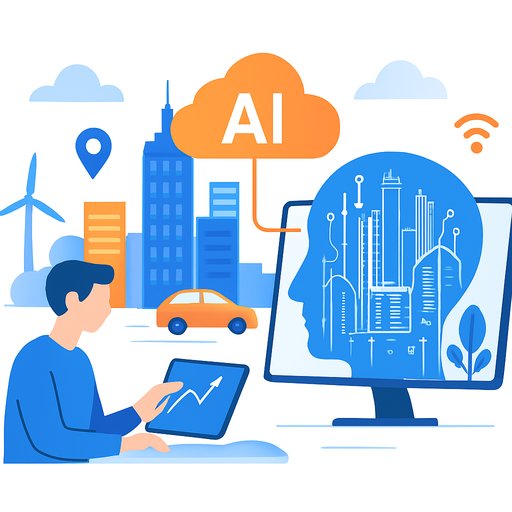How AI in Supply Chain Management is Transforming Business
Supply chains involve multiple vendors and logistics partners, making careful planning essential. Bottlenecks can disrupt production times, delivery rates, warehouse layouts, and ultimately affect profits. Artificial intelligence (AI) offers effective ways to streamline operations, enhance decision-making, and reduce risks such as lost profits or damaged goods.
The Current Use of AI in Supply Chain Management
A report from McKinsey & Company found that 95% of distributors are exploring AI integration in global supply chains, but fewer have implemented it successfully. One major barrier is finding the right talent. Interestingly, AI can also help reduce hiring costs by up to 20% through improved recruitment and retention.
However, a recent AI Workforce Report showed that over 50% of workers across industries lack adequate AI training and support. This gap means that even when AI tools are available, many employees do not know how to use them effectively.
How AI Can Improve the Supply Chain
Among workers who use AI effectively, over 79% report increased productivity. McKinsey highlights these impacts in distribution environments:
- Up to 30% reduction in inventory levels
- Up to 15% decrease in procurement costs
- Up to 20% savings in logistics expenses
Supply Chain Planning
Product trends can spike suddenly, especially on social media. AI helps businesses track these shifts, forecast demand, and place orders accordingly. This is particularly useful for products with short lifecycles like consumer beauty and tech items, where preferences change quickly.
One recommended approach is the “Human-AI Demand Forecasting Framework,” which balances AI and human input depending on the product category:
- Mostly AI-driven for personal care and lifestyle products
- Primarily AI with some human input for consumer tech
- Mostly human with AI support for specialty or regulated industries
- Heavily human-driven for long lifecycle, large purchases
Inventory Management
Accurate demand forecasts are only part of the equation. AI combined with IoT sensors can monitor stock levels in real time, detecting when products are removed from shelves. This live data feeds machine learning algorithms that adjust inventory estimates, helping avoid overstocking.
Additionally, AI can analyze warehouse layouts and optimize storage by tracking worker routes. This reduces unnecessary trips and speeds up retrieval and packaging, lowering costs and freeing staff from repetitive tasks.
Logistics and Transportation
AI's benefits extend to delivery and customer service. Logistics companies use AI models to predict delivery times more precisely and deploy AI chatbots to handle customer queries without downtime. For example, DHL offers an AI assistant named Aida to support users with global forwarding services.
Supplier Relationship and Risk Management
Beyond physical operations, AI supports supplier management through tools like contract review software and vendor portals that monitor compliance and documentation. Machine learning also tracks delivery performance and damaged inventory, highlighting risks early.
While human oversight remains essential in supplier relations, AI simplifies data processing and analysis, enabling quicker, more informed decisions.
What’s Next for AI-Powered Supply Chain Management
Interest in AI-related supply chain topics is growing. Here are key areas to watch:
Supply Chain Analytics
This includes all data-driven tools that predict demand, boost efficiency, minimize disruptions, and optimize sourcing and warehousing. Searches for “supply chain analytics” have increased by 257% over five years, with expectations to nearly quadruple by late 2026. Companies not investing here risk falling behind competitors.
Sell The Trend
Sell The Trend is an AI-powered dropshipping platform that helps e-commerce businesses spot viral products without holding inventory. Its popularity is climbing rapidly, with search interest expected to exceed 65,000 monthly soon.
AI Mapping
Used to plan and organize product storage and distribution, AI mapping is gaining traction in supply chain management. Searches for this term are forecasted to reach 76,500 per month by summer 2026.
To stay updated on supply chain innovations and AI tools that improve everything from inventory planning to marketing, consider exploring training resources. For example, Complete AI Training offers courses that can help managers apply AI effectively within their operations.
Your membership also unlocks:






